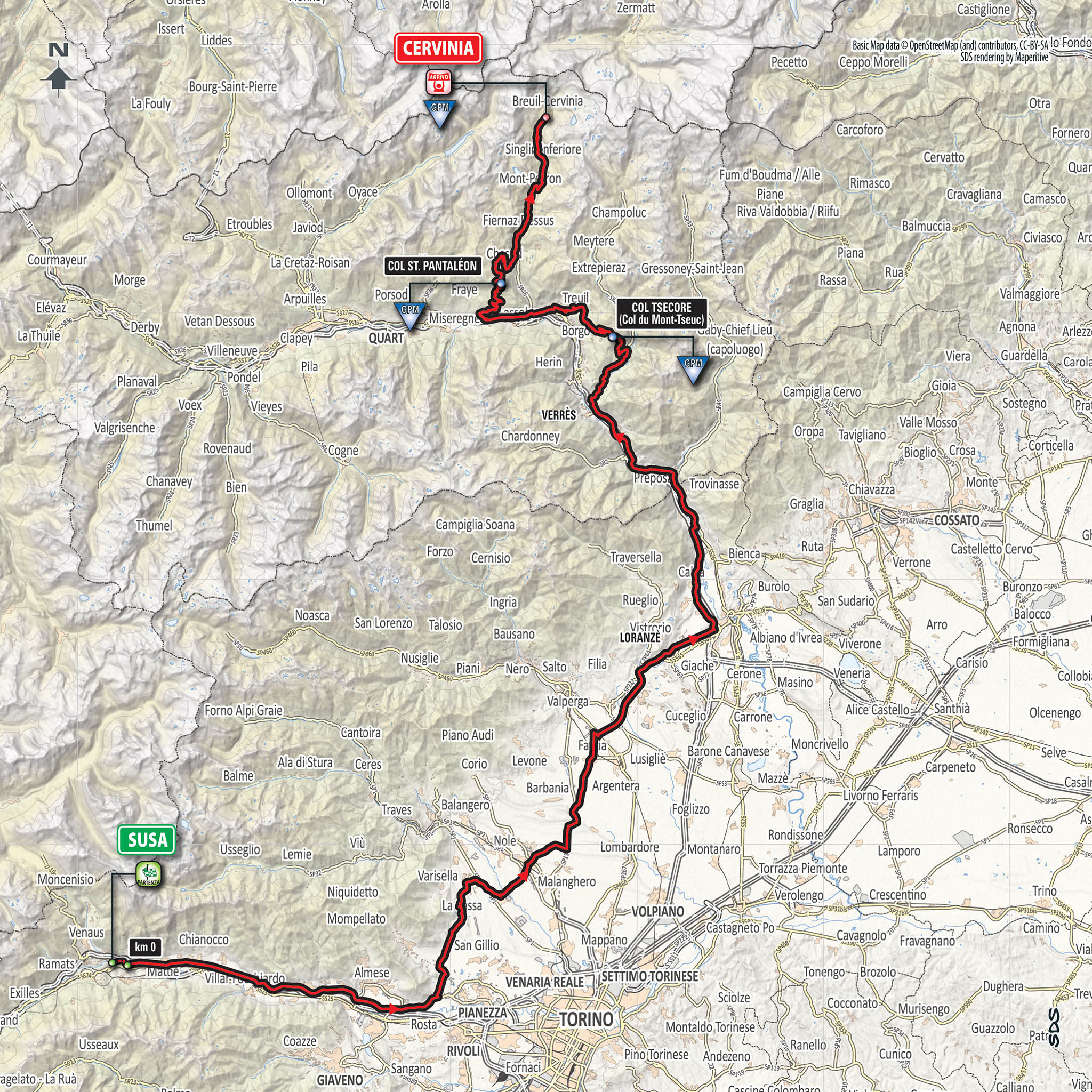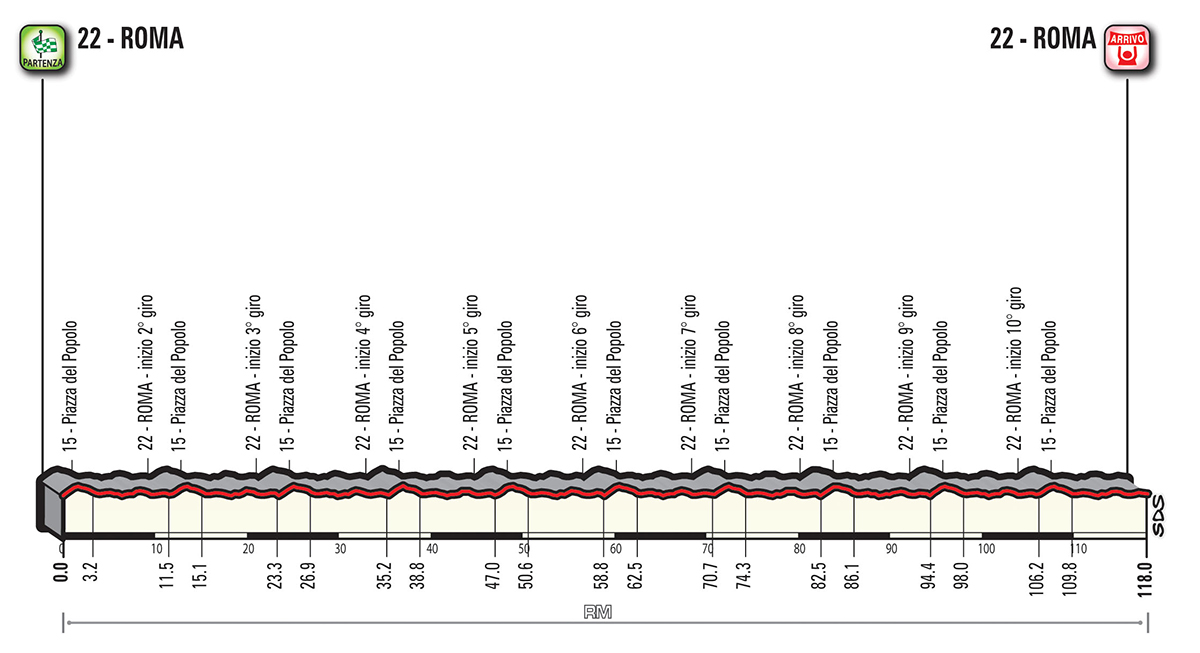
2018 Giro d'Italia Week 3 - Lake Garda, Alps & Rome : Stage Routes & Profiles
Information from the Official Giro d'Italia website
Stage 16 : 22nd May 2018
Individual time trial fit for against-the-clock racers. The course is
almost completely flat with long straight stretches connected by wide
bends where the speed doesn’t drop. The final section in the city is
slightly more complex, but still very fast-running. Expected average
speed around 50 km/h, and two split time recordings along the course.


Stage 17 : 23rd May 2018
Stage with a (slightly) uphill start and a few long tunnels up to Lake
Iseo. Short climbs, including the classified Lodrino climb, lead up to
the first pass on the finish line. An approx. 20-km final circuit runs
across the entire Franciacorta area. Last stage fit for sprinters before
the final showcase stage in Rome.


Stage 18 : 24th May 2018
Almost 200-km flat stage with a final “steep” climb. A very long
approach across the Po Valley and the Langhe leads up to Mondovì, where
the route starts to climb. Thus, the fight for victory will start here. A
long climb with fairly uncomplicated and very constant gradient leads
to the finish. It is the very climb where Tonkov (1996) and Garzelli
(2000) claimed their win at the Giro and Gerrans (2008) at the Tour.


Stage 19 : 25th May 2018
First queen stage across the Western Alps featuring 4 categorised
climbs, all of them being long and testing ascents. Past the Colle del
Lys, the stage features the Colle delle Finestre (Cima Coppi) with a
9-km dirt road. This time the finish is not located in Sestrière, which
is crossed by the course, but in Bardonecchia (Jafferau), after a 7-km
climb at a 9% gradient. It is the same place where Eddy Merckx joined
and passed Josè Manuel Fuente, who had attacked, in 1972. During the
“back-up” stage in 2013 that climb was raced without any previous ascent
and the finish line was crossed by Santambrogio (later disqualified)
and Nibali, who won the Giro.


Stage 20 : 26th May 2018
Second stage in the Western Alps with 4500-m cumulative elevation gain
along 3 climbs only, following a flat (though continuously uphill)
section. Once in Valle d’Aosta the race takes in the new 3-km Col
Tsecore climb with its last stretch at a gradient over 12% and, after a
fast-running descent, the route features St. Pantaléon and Cervinia
climbs with no respite. Col Tsecore has a “changing” name: from the
original Col du Mont-Tseuc, in its Italian version it is called Zuccore
as well as Tzecore. The Giro adopts the local signposting denomination
that says “Col Tsecore”.


Stage 21 : 27th May 2018
Final showcase stage in an 11.8-km circuit to be raced 10 times across
the centre of Rome. The route runs along most of the roads of the 2009
TT, such as the Fori Imperiali, via Nazionale, via Sistina, Piazza del
Popolo, via del Corso, via del Circo Massimo, across the Terme di
Caracalla and next to the Colosseum before the finish (possibly a
sprint) at the Fori Imperiali.


View our Giro Week 3 Bike Tours : Ride Every Kilometre | Experience